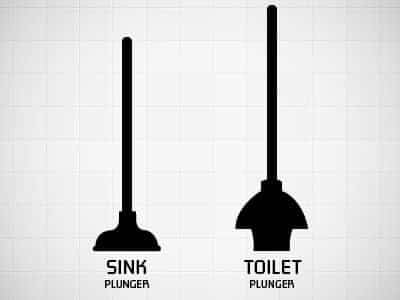
3 Ways to Protect Your Bathroom’s Plumbing
February 25, 2020
Your bathroom’s plumbing is busy. And it is important. Between the toilet, the sink, the shower and the bathtub, you depend on your bathroom throughout the day, every day. So, when a plumbing issue arises in your bathroom it can cause a major headache. But, don’t stress! Our plumbers have you covered with three easy ways to protect your bathroom’s plumbing:
1. Deal with bathroom leaks at the first sign of a problem.
A small leak can quickly add up to a big loss of water (and money!). In fact, the EPA.org reports that, “A leaky faucet dripping at the rate of one drip per second can waste more than 3,000 gallons per year.”
Not only is it important to deal with a leak at the first sign of an issue, it is also important to proactively check for leaks. Regularly taking a look at the pipes under your sink, the base of your toilet, your showerhead and your faucet for small leaks is a great start. We also recommend checking the ceiling of the room under your bathroom for any signs of water damage from potential bathtub leaks.
2. Be careful with what you flush.
Toilet clogs are usually caused by something getting flushed that shouldn’t have. We can’t stress it enough: never put anything except for toilet tissue into your toilet. Even non-toilet-tissue items that say ‘flushable’, like ‘flushable wipes’ should never, ever be flushed.
For the well-being of your bathroom plumbing, always avoid flushing the following items:
- cotton balls
- cotton swabs
- wipes
- tissues
- dryer sheets
- floss
- hair
- feminine hygiene products
- diapers
- band aids
- medications
- contact lenses
- food
3. If you need to plunge your toilet, do it the right way.
 And, plunging your toilet the right way starts with the right plunger. Toilet plungers look a lot like the most common plunger – the one with the flat cup on the bottom, which is made for sink drains – but the toilet version has a narrow circle opening that juts out from the middle of the flat cup, which fits into the toilet’s drain (see image).
And, plunging your toilet the right way starts with the right plunger. Toilet plungers look a lot like the most common plunger – the one with the flat cup on the bottom, which is made for sink drains – but the toilet version has a narrow circle opening that juts out from the middle of the flat cup, which fits into the toilet’s drain (see image).
Once you have the correct plunger, cover the floor around the toilet (and anything else that is close by) with a protective layer of paper towels. It will make the clean-up much, much easier. Now, grab the plunger and hold it at a 90 degree angle with the jutting out portion on the bottom directly inserted into the toilet’s drain. Begin plunging up and down. If your toilet does not clear within a minute’s time, give us a call. A professional plumber is needed for hard to clear clogs!
*plunger image from pinterest.com

Why Is My Toilet Not Flushing Properly?
December 18, 2024

How to Flush a Water Heater
September 24, 2024

Why Are There Bugs in My Bathroom?
June 24, 2024

Common Reasons Your Toilet Won’t Flush
June 22, 2024

Signs Your Air Conditioner Needs To Be Replaced
June 18, 2024

How Do Sump Pumps Work?
June 15, 2024

